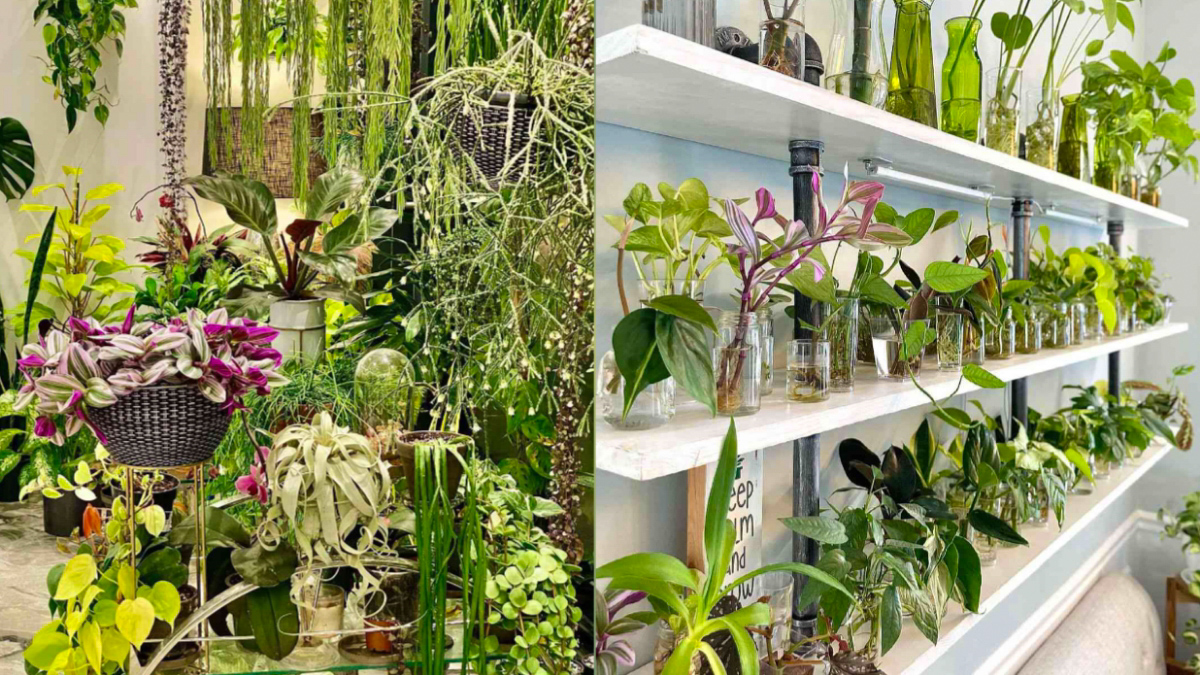In today’s fast-paced urban life, more and more people are turning to indoor gardening to grow their own fresh, organic food—right from the comfort of their homes. Whether you’re living in a small apartment, a house without a yard, or simply want to enjoy fresh veggies all year round, growing vegetables indoors is a practical and rewarding hobby.
In this guide, we’ll explore the best vegetables to grow indoors, beginner-friendly tips, common challenges, and how to get the most out of your indoor vegetable garden.
🌱 Why Grow Vegetables Indoors?
Before we dive into the best veggies to grow, let’s talk about why indoor gardening is gaining so much popularity:
- 🏡 Space-saving: Perfect for apartments and small homes.
- 🌦️ All-season growing: Weather doesn’t limit your harvest.
- 🐛 Fewer pests: Indoors means fewer insects and plant diseases.
- 💚 Healthier eating: Fresh, pesticide-free vegetables on demand.
- 🌎 Sustainable living: Reduces reliance on store-bought produce.
🧰 What You Need to Get Started
You don’t need a backyard to start gardening. Here’s what you need to grow vegetables indoors successfully:
🪴 Basic Supplies:
- Containers or pots with drainage holes
- Potting mix (not garden soil)
- Seeds or starter plants
- Watering can or spray bottle
- Grow lights (especially in low-light rooms)
- Fertilizer (organic or liquid plant food)
💡 Tip: South-facing windows provide the best natural light. But if that’s not available, use LED grow lights for consistent growth.
🥕 Best Vegetables to Grow Indoors
Now let’s dive into the main attraction! Below are the top vegetables that thrive indoors, even in small spaces or under low-light conditions.
1. Lettuce
Lettuce is one of the easiest leafy greens to grow indoors. It grows quickly and doesn’t need deep containers.
- Light: Moderate to bright light (grow lights work well)
- Harvest time: 30–40 days
- Varieties: Romaine, Butterhead, Loose-leaf
📝 Pro tip: Harvest outer leaves to encourage continued growth.
2. Spinach
Spinach is rich in iron and perfect for indoor containers. It’s cold-tolerant, making it ideal for cooler rooms.
- Light: Indirect sunlight or LED lights
- Harvest time: 30–50 days
- Container depth: 6 inches or more
3. Radishes
Fast-growing and space-efficient, radishes can be grown even in tight spots like kitchen shelves.
- Light: 6 hours of light daily
- Harvest time: 20–30 days
- Varieties: Cherry Belle, White Icicle
🌟 Bonus: You can eat the radish greens too!
4. Green Onions (Scallions)
A favorite among indoor gardeners, green onions regrow easily from kitchen scraps.
- Light: Moderate light; windowsill-friendly
- Harvest time: 20–30 days
- Maintenance: Water regularly and trim as needed
🔁 Regrow Tip: Place store-bought onion roots in water to re-sprout.
5. Tomatoes (Dwarf Varieties)
Tomatoes need more care and light, but cherry or dwarf tomatoes grow beautifully indoors with the right setup.
- Light: 10–12 hours/day of bright light or LED grow lights
- Support: Stakes or cages
- Varieties: Tiny Tim, Patio Princess
6. Peppers
Both sweet and hot peppers can thrive indoors in containers. They love warmth and light.
- Light: Bright, direct light
- Container depth: 12 inches or more
- Harvest time: 60–90 days
7. Carrots (Short Varieties)
Not all carrots need deep soil. Mini or round carrot types grow well in indoor pots.
- Container depth: 8–10 inches
- Varieties: Thumbelina, Parisian, Short ‘n Sweet
- Watering: Keep soil consistently moist
8. Kale
Kale is hearty, cold-resistant, and packed with nutrients. It’s great for salads, smoothies, and cooking.
- Light: Moderate to high light
- Harvest time: 50–70 days
- Growing tip: Remove outer leaves as needed
9. Microgreens
If you’re looking for quick, nutritious harvests, microgreens are a dream. You can grow them in trays, jars, or shallow containers.
- Harvest time: 7–14 days
- Best choices: Arugula, broccoli, radish, mustard, beet
- Light: Moderate; grow lights ideal
10. Swiss Chard
Colorful, nutrient-rich, and surprisingly easy to grow indoors.
- Container depth: 6–8 inches
- Harvest time: 50–60 days
- Bonus: Decorative as well as edible!
🌿 General Growing Tips for Indoor Veggies
- ✅ Rotate plants weekly for even growth.
- ✅ Avoid overwatering – use a spray bottle for misting.
- ✅ Use quality potting mix designed for containers.
- ✅ Feed plants every 2–4 weeks with balanced fertilizer.
- ✅ Clean your pots before replanting to avoid disease buildup.
⚠️ Common Indoor Gardening Challenges (And How to Solve Them)
| Problem | Cause | Solution |
|---|---|---|
| Leggy plants | Not enough light | Use grow lights or move to sunnier spot |
| Yellow leaves | Overwatering or poor drainage | Check pot holes and reduce watering |
| Slow growth | Lack of nutrients | Use balanced liquid fertilizer |
| Mold on soil | High humidity or poor airflow | Improve ventilation and let topsoil dry out |
🛠️ Handy Tools for Indoor Vegetable Gardening
These tools make indoor gardening smoother and more enjoyable:
- 🌿 LED grow light (full spectrum)
- 🌿 Self-watering containers
- 🌿 Soil moisture meter
- 🌿 Small trowel and pruning scissors
- 🌿 Compact vertical garden stand
You can find these easily online or in gardening stores. Some may even come in starter kits.
❓ Indoor Gardening FAQs
Q1: Can I grow vegetables indoors without sunlight?
Yes, with the help of LED grow lights, you can simulate natural sunlight and grow almost any vegetable.
Q2: How often should I water indoor vegetables?
Generally, water when the top inch of soil feels dry. Avoid soggy soil.
Q3: Do I need to use fertilizer?
Yes, indoor plants rely on you for nutrients. Use balanced liquid fertilizer every 2–4 weeks.
Q4: What are the fastest vegetables to grow indoors?
Radishes, lettuce, microgreens, and green onions grow quickly—some in as little as 10–30 days.
🌟 Final Thoughts
Indoor gardening offers a practical and rewarding way to grow your own fresh food, even if you lack outdoor space. From crisp lettuce to juicy tomatoes, you can enjoy a variety of vegetables year-round—all with minimal tools and space.
So, grab some seeds, prep a sunny corner (or a grow light), and start your indoor vegetable garden today. Your health, wallet, and tastebuds will thank you!

